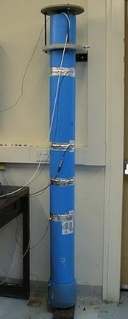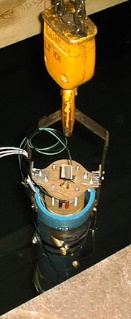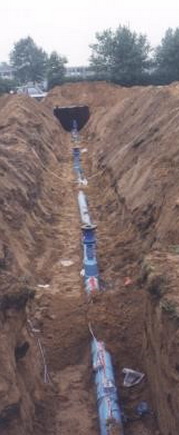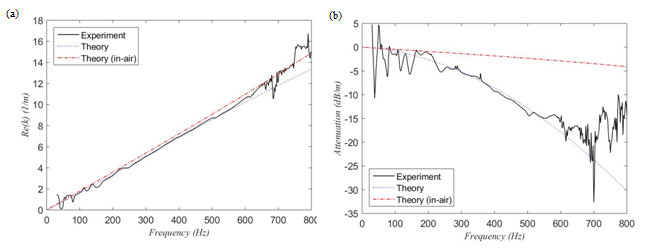Cylindrical pipes are the practical elements for transporting fluids and gases in the petrochemical, water and energy industries. Leakage from pipes is a subject of increasing concern in China and across the world due to the social, environmental and economic consequences. For example, huge amount of water is lost undetectably without any signs from mains water pipes. According to World Bank, the estimated losses in water distribution systems account for 48.6 billion m3/year.
Acoustic techniques have been shown to be effective for the detection of leaks in fluid-filled pipes. In particular, methods based on cross-correlation provide a powerful solution for locating water leaks, and are now in common use in many countries.
The dominant wave types that propagate in fluid-filled pipes must be better understood in order to meet the challenge of significantly improving water leakage detection ranges, in particular for plastic pipes. Recently, researcher GAO Yan from the Institute of Acoustics of the Chinese Academy of Sciences together with researchers from China and the UK have been working on improving acoustic techniques for better leak detection in fluid-filled pipe systems.
They have developed an analytical method that facilitates insight into the loading effects of surrounding medium on the wave propagation characteristics at low frequencies. The model was initially adopted to research the dispersion characteristics of the axisymmetric (n=0) fluid-dominated (s=1) wave motion in buried fluid-filled pipes. Recently they have extended this model to investigate the loading effects of surrounding elastic medium on the propagation characteristics of the s=1 wave.
Examination of the form of the analytical expression has been made for an air, water and soil media. The model has been used to show explicitly the loading effects of surrounding medium, acting as a combination of mass, stiffness and radiation damping on the s=1 wavenumber.
They have found that firstly the loading effects of an air on the wavenumber are negligible at low frequencies. The wavespeed is slower than the free-field wavespeed due to the heavy fluid loading and the wave attenuation is governed by losses within the pipe wall. Secondly, a fluid medium is to add mass to the pipe wall, and thereby decreasing the wavespeed relative to the in-air value. The attenuation is attributed to both material losses within the pipe wall and radiation losses as a result of the added radiation damping. Finally a soil medium is to add stiffness and radiation damping to the pipe wall. Correspondingly, the wavespeed increases compared to the in-air case. The added damping effect is greater than that for a fluid medium, and thus leads to the largest attenuation compared to an air and water media.
The theory has been applied to wavenumber measurements made previously on medium density polyethylene water pipes (as illustrated in Fig. 1) and good agreement has been shown for the in-air, in-water and buried cases as shown in Figs. 2 and 3. The analytical method provides the framework for modeling the propagating s=1 wave in a fluid-filled pipe.



(a) (b) (c)
Fig. 1 Experimental set-up for wavenumber measurements on water-filled medium density polyethylene pipes: (a) in-air; (b) in-water; (c) buried in sandy soil (Image by GAO Yan et al.)

Fig. 2 Comparison of measured and predicted wavenumbers: (a) real part; (b) attenuation (dB/m) (Image by GAO Yan et al.)

Fig. 3 Comparison of measured and predicted wavenumbers: (a) real part; (b) attenuation (dB/m) (Image by GAO Yan et al.)
References:
GAO Yan, LIU Yuyou, Jennifer M. Muggleton. Axisymmetric Fluid-dominated Wave in Fluid-filled Plastic Pipes: Loading Effects of Surrounding Elastic Medium. Applied Acoustics (Vol. 116, January 15, 2017, pp. 43-49). DOI: 10.1016/j.apacoust.2016.09.016
GAO Yan, SUI Fusheng, Jennifer M. Muggleton, YANG Jun. Simplified Dispersion Relationships for Fluid-dominated Axisymmetric Wave Motion in Buried Fluid-Filled Pipes. Journal of Sound and Vibration (Vol. 375, August 2016, pp.386-402). DOI: 10.1016/j.jsv.2016.04.012
Contact:
GAO Yan
Key Laboratory of Noise and Vibration Research, Institute of Acoustics, Chinese Academy of Sciences, 100190 Beijing, China
E-mail: gaoyan@mail.ioa.ac.cn